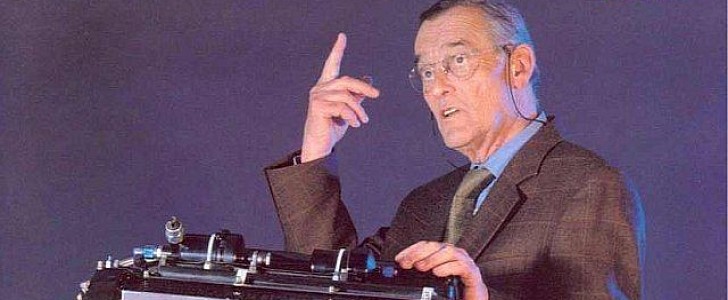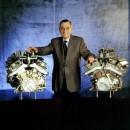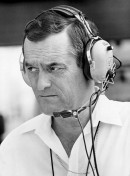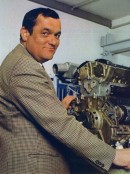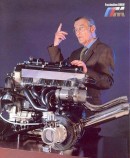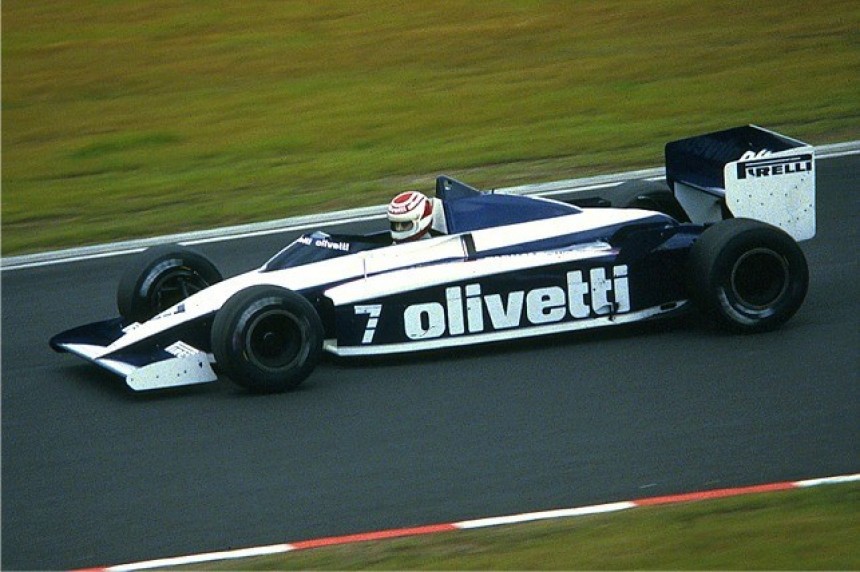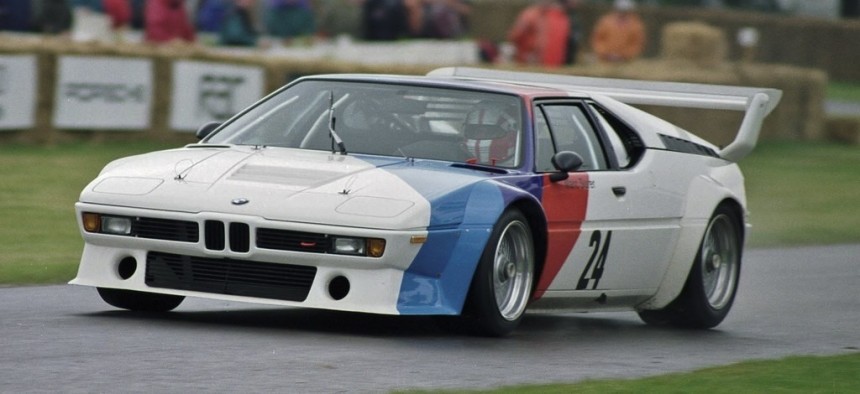A short while ago, we showcased the story behind the last-minute decision by McLaren F1's chief engineer to choose BMW M Division to power what was to become the world's fastest car for the next 15 years. But there was a second man in this equation.
An engineer who quietly laid claim to being one of the most brilliant post-war German engineers of the 20th century. He is a man who should probably have his name enshrined in every petrolhead history book made in the last 40 years. But sadly, his name is largely lost to history. Especially compared to some household names with whom he was a contemporary. Well, the time's come to change all of that. This is Paul Rosche, the heart and soul of M Division.
When Ferdinand Porsche took his last breath in 1951, Rosche and his contemporaries filled the considerable void Old Man Porsche left. They may have gone on to work for companies that challenged Porsche later on. But on a primordial level, all these men carried the same spirit of science and innovation that the Beetle's creator carried.
Just six years after Porsche's death, Paul Rosche joined BMW mere weeks after he graduated from a Munich polytechnic institute, located in the the same town of his birth, on April 1st, 1934. His very first assignment was working in the then tiny engine R&D department, whose department supervisor, Alexander von Falkenhausen, definitely knew an emerging genius when he saw one. He gave the young Paul Rosche a promotion after only a short time under his watch.
Before long, Rosche was right in the think of it with BMW. Helping to design key internals of BMW's first production automotive V8. A bespoke and novel overhead-valve design at a time when only a handful of other automakers were doing the same.
Companies like Oldsmobile and Jaguar, for example. But even by contemporary standards, the 3.2-liter naturally aspirated V8 found in the BMW 502 was a world-class engine. 140 horsepower might seem paltry, but it was more than double the average of what contemporary passenger cars were capable of in the mid-1950s. By this stage in his early career, Paul Rosche developed a knack for camshaft design that set him apart from his peers.
His next big accomplishment was the 80 horsepower M10 engine used in the 1500, a line of cars that would go on to forge the iconic 2002 Turbo. By 1972, Rosche was designing the inner workings of BMW's brand new Formula Two racing venture's engines in collaboration with March Engineering's factory-sponsored team.
By 1973, Rosche was the undisputed lead engineer in BMW's racing engine department and its head of their new Motorsports Division by 1975. With free reign to do as he pleased, Roshe set about trickling down his own race engine technology onto BMW's road cars.
But not before unleashing the monstrous M12 turbocharged V8 engine into the Formula One Grand Prix season in the mid-1970s. It would take until 1982 to make its debut, but boy did it make a wonderful impression. It was rumored to be jetting an absurd 1500 horsepower with the most aggressive tune, although it could only be confirmed to be in the vicinity of 1,300 hp. In this celebrated era of F1, there were two settings for the engines. The qualifying engines were more powerful because they had to last for, at minimum, ten or so laps, of which only one counted. During the race, these engines were partially de-tuned so they could endure the whole race without exploding. So in a sense, both numbers are right.
Soon after, the first BMW M1 was unveiled to the world, going into production in 1978. Of course, Rosche was a key figure in the development of the BMW M88 3.5-liter straight-six engine under the middle mounted hatch hiding the engine bay. BMW wouldn't make another mid-engined production car until the i8 plug-in hybrid over 30 years later.
Think the DOHC four-cylinder S14 engine in the e30 M3 is an all-time great? You can thank Rosche for that as well, and also the peppy M10 I-4 engine in the 2002 Turbo. In his tenure with BMW and M Division, Rosche and his team received dozens of awards and accolades for their work in the production and racing performance engineering. Including powering Nelson Pique to the Formula One World Championship in 1986 and countless wins in European Touring Car Racing, Euro Formula Two, and the 24 Hours of LeMans.
But it was a chance encounter with McLaren engineer Gordon Murray at the German Grand Prix in 1990 where Rocshe signed on to the project that would seal his status as an all-time auto engineering great. It was a 6.1-liter (370.0-cubic inch) V12, the likes of which we'll probably never see again, mostly because most hypercars of the future are bound to be all-electric.
It's just another reason of so many why Paul Rosche deserves your eternal gratitude if you're a hardcore BMW fan. He essentially wrote your entire childhood. Rosche died on November 15th, 2016, as an undisputed hero of the German people. One we believe deserves a place at the table with the likes of Enzo Ferrari, Ettore Bugatti, and Carrol Shelby. Yes, we went there.
Check back for more from BMW M Month here on autoevolution.
When Ferdinand Porsche took his last breath in 1951, Rosche and his contemporaries filled the considerable void Old Man Porsche left. They may have gone on to work for companies that challenged Porsche later on. But on a primordial level, all these men carried the same spirit of science and innovation that the Beetle's creator carried.
Just six years after Porsche's death, Paul Rosche joined BMW mere weeks after he graduated from a Munich polytechnic institute, located in the the same town of his birth, on April 1st, 1934. His very first assignment was working in the then tiny engine R&D department, whose department supervisor, Alexander von Falkenhausen, definitely knew an emerging genius when he saw one. He gave the young Paul Rosche a promotion after only a short time under his watch.
Before long, Rosche was right in the think of it with BMW. Helping to design key internals of BMW's first production automotive V8. A bespoke and novel overhead-valve design at a time when only a handful of other automakers were doing the same.
His next big accomplishment was the 80 horsepower M10 engine used in the 1500, a line of cars that would go on to forge the iconic 2002 Turbo. By 1972, Rosche was designing the inner workings of BMW's brand new Formula Two racing venture's engines in collaboration with March Engineering's factory-sponsored team.
By 1973, Rosche was the undisputed lead engineer in BMW's racing engine department and its head of their new Motorsports Division by 1975. With free reign to do as he pleased, Roshe set about trickling down his own race engine technology onto BMW's road cars.
But not before unleashing the monstrous M12 turbocharged V8 engine into the Formula One Grand Prix season in the mid-1970s. It would take until 1982 to make its debut, but boy did it make a wonderful impression. It was rumored to be jetting an absurd 1500 horsepower with the most aggressive tune, although it could only be confirmed to be in the vicinity of 1,300 hp. In this celebrated era of F1, there were two settings for the engines. The qualifying engines were more powerful because they had to last for, at minimum, ten or so laps, of which only one counted. During the race, these engines were partially de-tuned so they could endure the whole race without exploding. So in a sense, both numbers are right.
Think the DOHC four-cylinder S14 engine in the e30 M3 is an all-time great? You can thank Rosche for that as well, and also the peppy M10 I-4 engine in the 2002 Turbo. In his tenure with BMW and M Division, Rosche and his team received dozens of awards and accolades for their work in the production and racing performance engineering. Including powering Nelson Pique to the Formula One World Championship in 1986 and countless wins in European Touring Car Racing, Euro Formula Two, and the 24 Hours of LeMans.
But it was a chance encounter with McLaren engineer Gordon Murray at the German Grand Prix in 1990 where Rocshe signed on to the project that would seal his status as an all-time auto engineering great. It was a 6.1-liter (370.0-cubic inch) V12, the likes of which we'll probably never see again, mostly because most hypercars of the future are bound to be all-electric.
It's just another reason of so many why Paul Rosche deserves your eternal gratitude if you're a hardcore BMW fan. He essentially wrote your entire childhood. Rosche died on November 15th, 2016, as an undisputed hero of the German people. One we believe deserves a place at the table with the likes of Enzo Ferrari, Ettore Bugatti, and Carrol Shelby. Yes, we went there.
